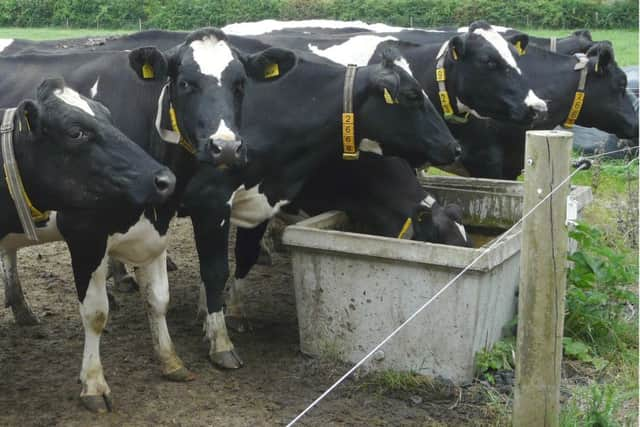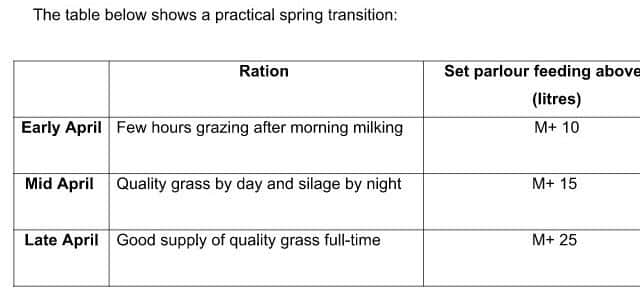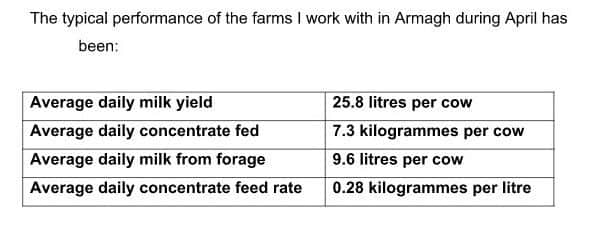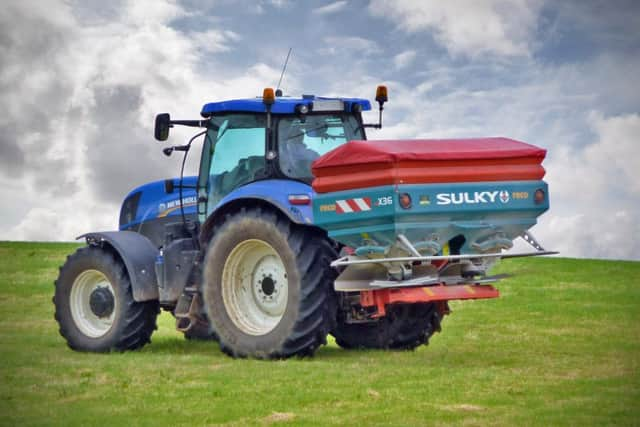DARD MANAGEMENT NOTES: Dairying


Now that the time has changed your cows should be going to grass straight after morning milking and grazing for half a day. Aim to have your grazing rotation fully established by the third week in April. Full-time grazing will provide the nutritional requirements for cows yielding up to 25 litres.
Currently cows grazing for a few hours after morning milking are being topped-up in the parlour after the first 10 litres of milk at a rate of 0.45 kg of concentrate per litre. Once cows are settled on day time grazing restrict parlour feeding to cows giving more than 15 litres. Full-time grazing with 7.5 kg of parlour supplementation provides the nutritional requirements for cows yielding up to 40 litres. Cows yielding above 40 litres should still have access to blend in a TMR.
The table below shows a practical spring transition:


Advertisement
Hide AdAdvertisement
Hide AdThe typical performance of the farms I work with in Armagh during April has been:
Gradually get more grass into cows.
Change their parlour M+ as cows move to full-time grazing.
Have their grazing rotation fully established by the third week in April.


Drinking water
As a rule of thumb cows require five litres of water for every litre of milk produced. As about half of the herd’s daily water requirement is consumed after each milking it is important to provide adequate trough capacity and water flow rates to meet demand. Any restriction in water supply will affect milk yield. Provide enough trough space for 10% of the herd to drink at any one time and 700 mm of trough space per cow drinking. Position troughs in the grazing area to avoid yield restriction. The lip of the trough should be 850 mm above the ground and the water level 50-100 mm below the lip.
Laneways
Cows will make approximately 600 journeys to and from the field to the milking parlour this grazing season. Well maintained, wide laneways allow easy movement of stock. If cows are allowed to walk at their own speed they can pick their way along poor tracks. However if cows are under pressure they will not have time to negotiate sharp stones, holes or tight turns. Keep an eye on cows as they walk to identify lame cows. Treat lame cows immediately and improve damaged lane surfaces.


Nitrogen for silage
Advertisement
Hide AdAdvertisement
Hide AdA splash-plate application of 33 cubic metres per hectare (3000 gallons per acre) of cow slurry during February or March will have supplied enough phosphate and potash for first cut silage at typical silage field soil indices. It will also have provided some nitrogen (N) for grass growth. As there is still a major requirement for N fertiliser apply a further 100 kg of N per hectare (80 units per acre) to silage fields.